As Saturn returns to the morning sky, will this otherwise serene-looking planet experience another bout of severe weather? Keep your eyes peeled for white spots!
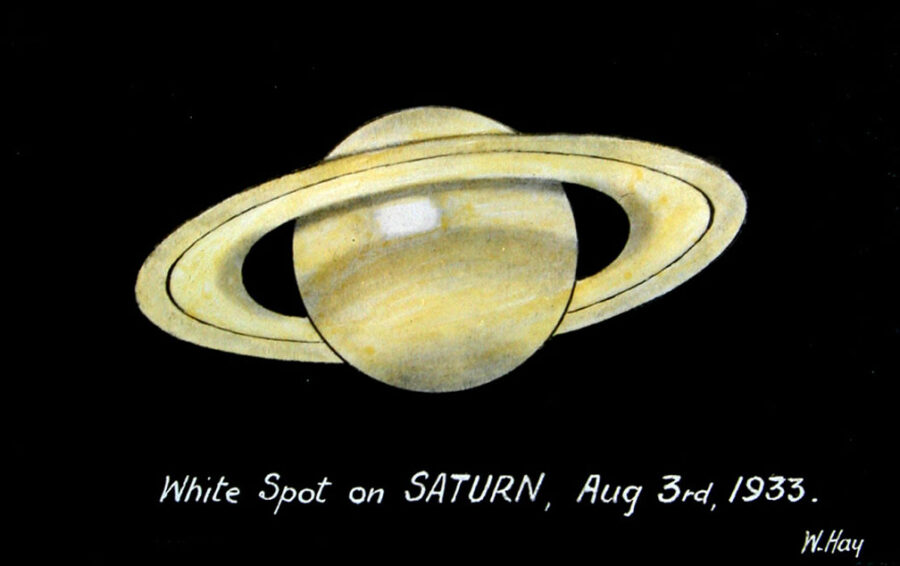
Will Hay, courtesy of the Royal Astronomical Society (RAS) and Martin Mobberley
Bright planets have deserted dusk this season and instead flocked like robins to the dawn sky. Venus and Mars have been steady companions for weeks, with Saturn just now entering the scene. I got my first look at the ring king on March 3rd paired with Mercury 45 minutes before sunup. Through my scope, Saturn was a quivering blob. But I held out until the planet rose high enough for the rings to steady and sharpen, marking (for me) the official start of the 2022 apparition.
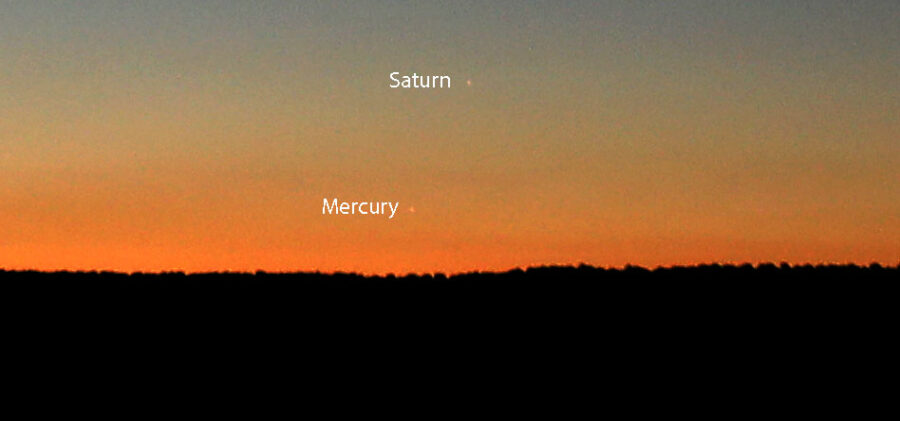
Bob King
Every planetary apparition is a chance to make a start fresh and set new observing goals. With Mars, this might be the year to spot both polar caps or identify a dark albedo feature you've never seen before. While Saturn's rings are undeniably captivating, let me suggest diverting some of your attention this apparition to its globe in anticipation of the next Great White Spot outbreak.
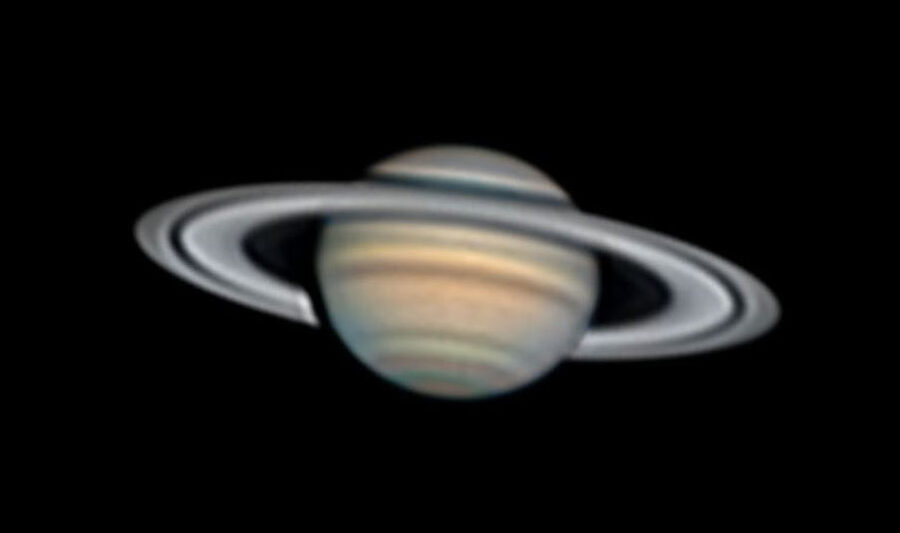
Lucca Schwingel Viola
Saturn looks pretty bland when compared to its bigger brother, Jupiter. Being more massive, Jupiter compresses its atmosphere into a layer about 75 kilometers thick, so ammonia-ice clouds form closer to the top of its airy envelope, where they're fair game for visual observers. Due to Saturn's lower gravity, its atmosphere is thicker — clouds form at a deeper level beneath a layer of photochemical haze, making them more difficult to see. Enhanced images clearly show numerous dark belts, bright zones, and occasional spots resembling Jovian features — but they're so muted, Saturn's globe appears barren in contrast.
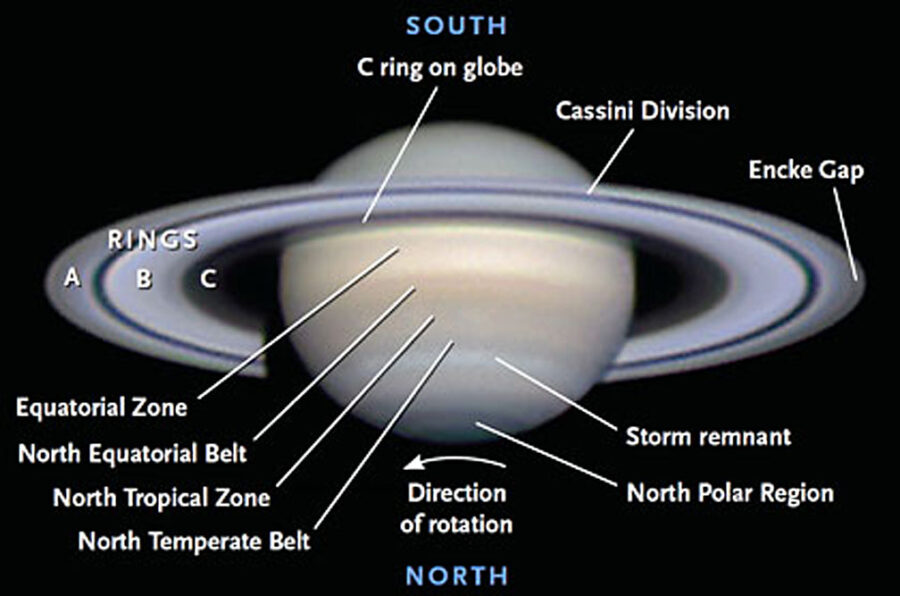
Like many amateurs my view of Saturn resembles Will Hay's sketch (above) — a bland, pale yellow globe encircled by a grayish-brown equatorial belt, a brighter equatorial zone, and topped by a gray hood. On rare occasions of excellent seeing I've glimpsed the north and south components of the North Equatorial Belt and suspected one or two additional bands and zones.
Courtesy of Martin Mobberley
But every 20 to 30 years, Saturn awakens from its visual dormancy and unleashes a powerful storm that lofts water and other molecules high into the atmosphere where they freeze out to form a large, white cloud. These Great White Spots have appeared at somewhat regular intervals since the first recorded observation by American astronomer Asaph Hall on December 7, 1876. Hall, best known as the discoverer of Martian moon Deimos and Phobos, observed a very bright, round spot 2–3″ in diameter in Saturn's Equatorial Zone that remained visible for nearly a month.

Will Hay, courtesy of the RAS and Martin Mobberley
Additional major eruptions occurred in 1903, 1933, 1960, 1990, and 2010, with a number of smaller spots recorded photographically (on the ground and from space) in recent years including a moderate-size storm in 1994. British entertainer and passionate amateur Will Hay made one of the most celebrated sightings in 1933. He noticed a large, bright elliptical spot in the planet's Equatorial Zone through his 6-inch refractor on the night of August 3rd. He immediately rang up his friend and fellow amateur W. H. Steavenson, who confirmed the observation. Hay used successive transits of the spot to measure Saturn's equatorial rotation period at approximately 10 hours 17 minutes. The modern value is closer to 10 hours 14 minutes.
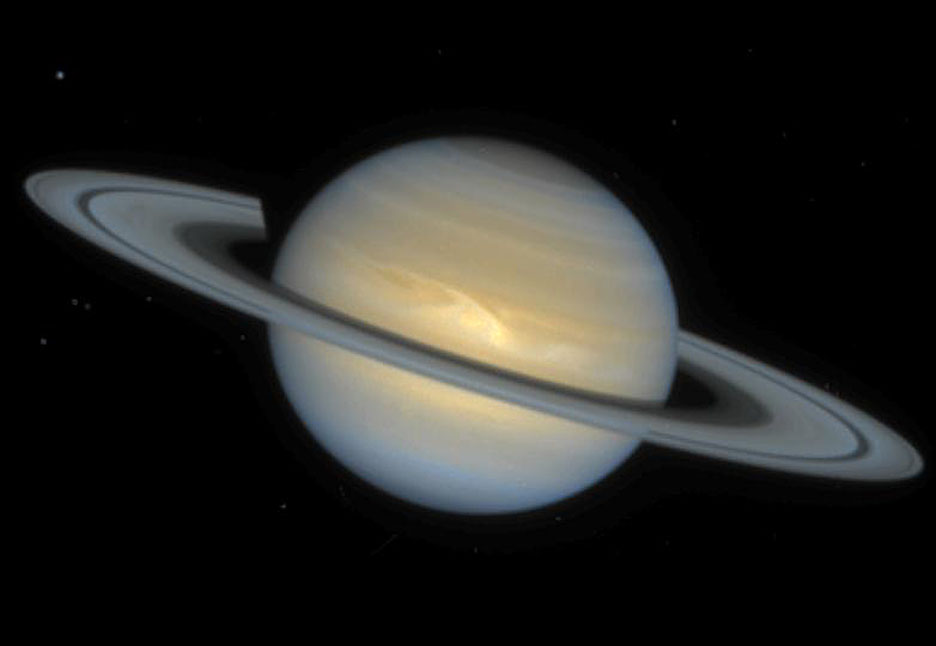
NASA / JPL / STScl
Great White Spot appearances have alternated between the equatorial region and mid-northern latitudes and may be connected to seasonal changes Saturn experiences during its 29.5-year orbital period . . . or not. The recent 1994 and 2010 eruptions break that pattern, making it all that more important to keep a close eye on the planet during this and other off-year apparitions.
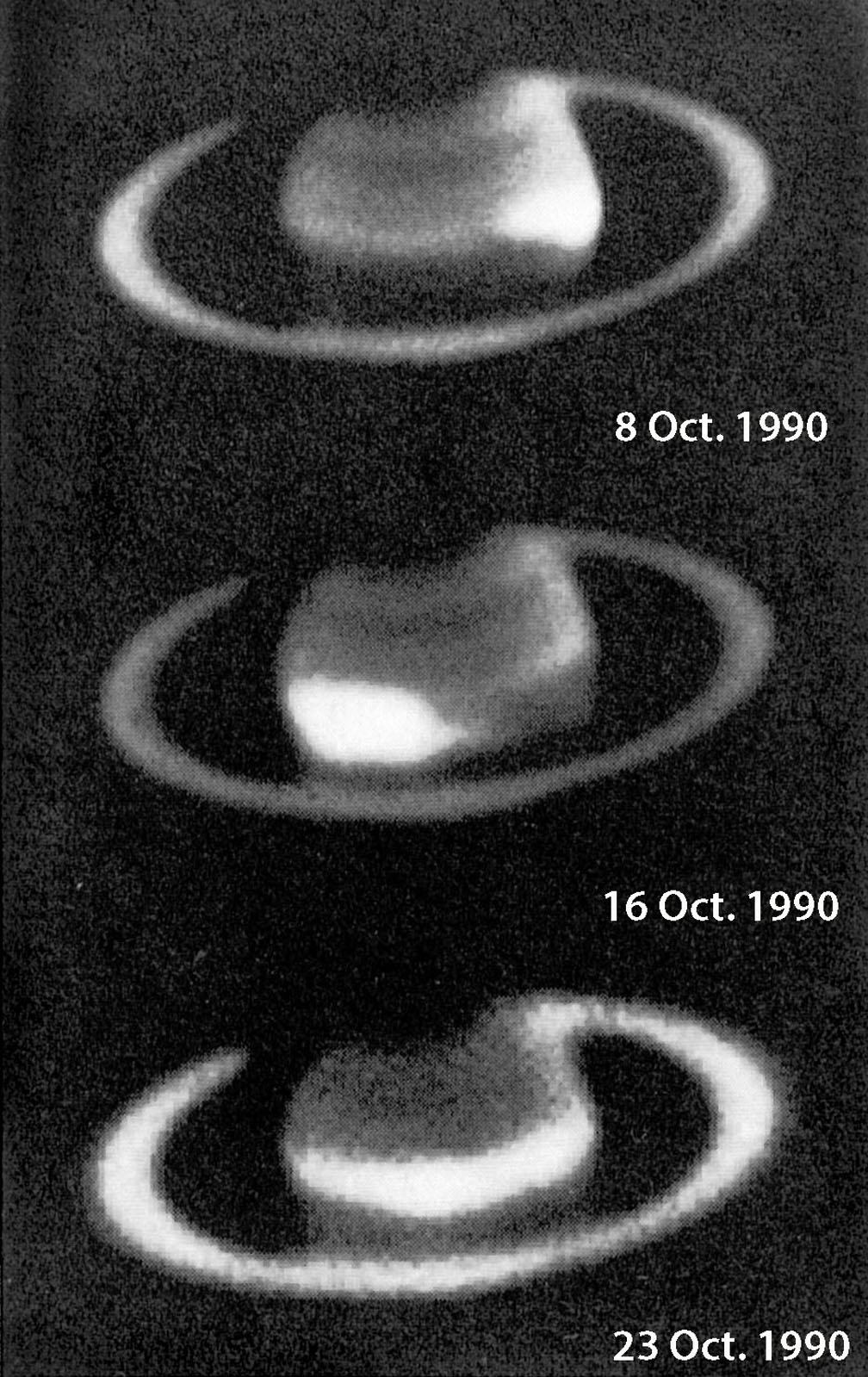
European Southern Observatory
The Great White Spot of 1990 was widely observed by amateurs, including myself. On October 12th of that year, using an 8-inch f/6 Dob, "the white spot was the brightest feature on Saturn, as bright or perhaps brighter than the outer B-ring," according to my observing notes. I remember being glued to the eyepiece as the core of the storm crossed the planet's central meridian, making it "the first time I'd ever watched anything on Saturn (its globe) move!" We often take Jupiter's east-to-west parade of meteorological curiosities for granted. Saturn requires the patience of Yoda, but the reward is great.
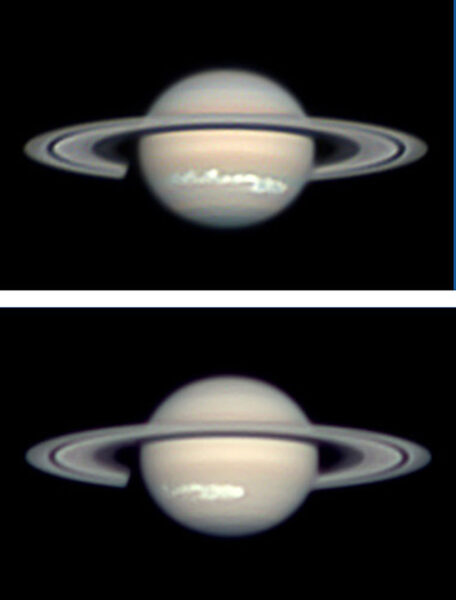
Amateurs have been instrumental in discovering and alerting professionals to the appearance these huge storms. Starting in 1933, they were the first to spot and report all major outbreaks. That includes the monster storm of 2010, discovered by amateurs Sadegh Ghomizadeh and Teruaki Kumamori on December 8th and 9th in Saturn's North Tropical Zone (NTrZ). By January 5, 2011, it had spread across more than 100° of longitude and resembled a thick plume of smoke billowing from a steam locomotive.
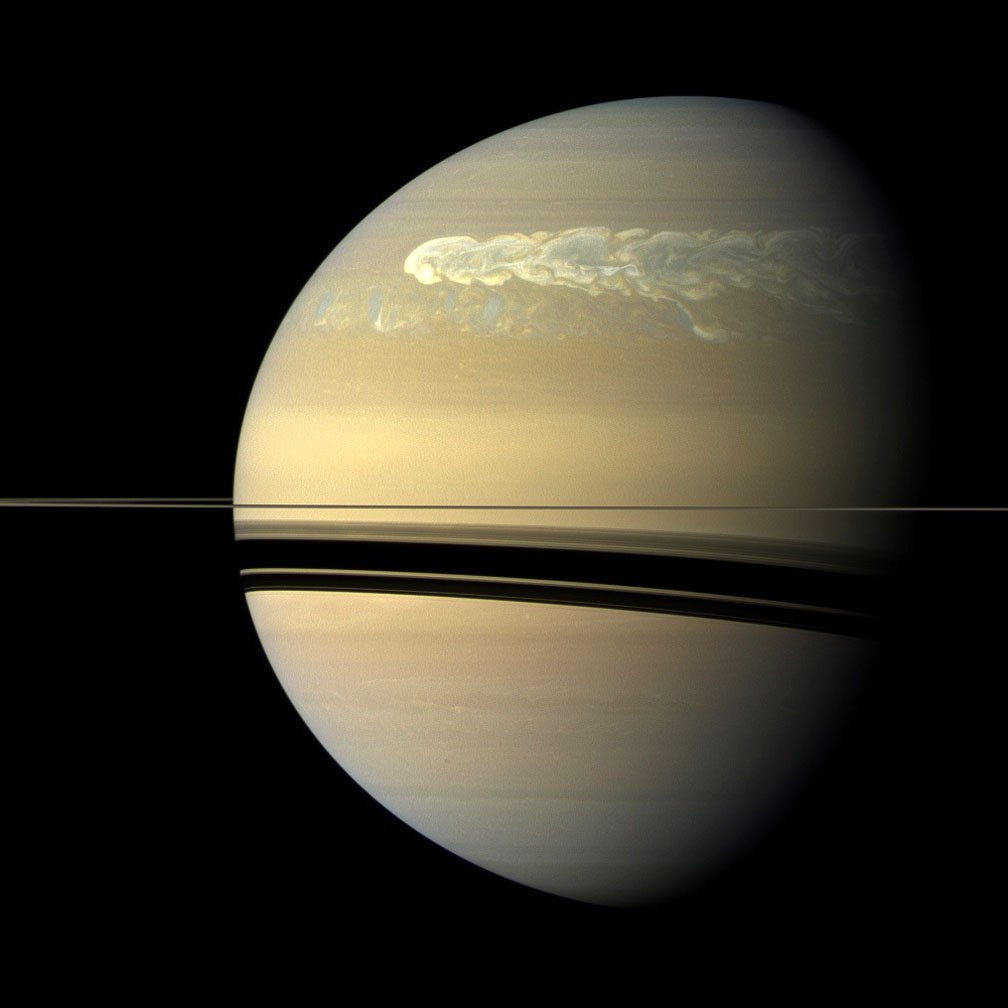
NASA / JPL-Caltech / SSI
Good thing it appeared 10 years early. As it happened, NASA's Cassini probe had a front-row seat at the planet and sent back spectacular, close-up images of roiling clouds and the storm "chasing its tail" around the globe. With its radio and plasma wave science instrument the probe detected 10 lightning strikes per second at the height of the storm that were 10,000 times more powerful than those on Earth.
What's at the bottom of these atmospheric hiccups? Saturn's air column is comprised of layers, with the outer atmosphere resting on top of denser air made of hydrogen, helium and water molecules. The outer layer acts like a lid that prevents the warmer air underneath from rising, cooling and condensing into turbulent storm clouds. Over time, that layer radiates its heat into space until it finally becomes cold and dense enough to sink, allowing the warm, water-rich air sequestered below to punch through to the top and blow up into a titanic thunderstorm.
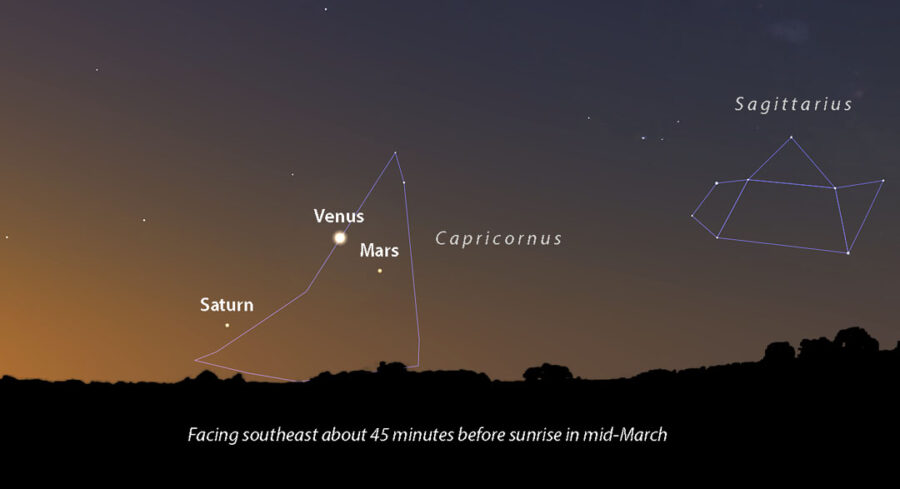
Stellarium
The heavier water molecules eventually rain back down, the storm calms and quiescence returns until the balance shifts again. There's no knowing if and when the next Great White Spot might appear, but if you subscribe to the ~30-year periodicity hypothesis, it should have occurred in 2020 or will again in 2040. No matter when it happens I'll put my money on amateurs like you spotting it first.
Resources to learn more about Saturn's current state:
Association of Lunar & Planetary Observers (ALPO) Saturn Section
Saturn Section of ALPO — Japan: This is an excellent source of recent images to compare with your observations.
 6
6









Comments
Chris-Schur
March 18, 2022 at 2:31 pm
Very informative article Bob. I would think that using a methane band filter would make details in such an outbreak more clearly seen. The disk would be nearly black and the white cloud would be like a beacon in contrast. I think next time we see something on the disk, Id like to try this!
You must be logged in to post a comment.
Bob KingPost Author
March 20, 2022 at 4:00 pm
Thanks, Chris! I'd love to see the results with a methane filter. Great idea! I know ethylene was detected during the 2010-11 storm.
You must be logged in to post a comment.
Randy Pfeiffer
March 21, 2022 at 8:07 pm
The huge storm of 2010-2011 looks very much like a von Karman vortex street. Upper-level wind speeds are high at this latitude. Perhaps it isn't a storm per se, but a narrow "volcanic" eruption that forms a high-density vertical shaft into the upper atmosphere? von Karman vortices are seen after cylinders at motion in air and look very similar to the Cassini image. This may be a plausible explanation for its fixed coordinates over its lifetime.
You must be logged in to post a comment.
Bob KingPost Author
March 22, 2022 at 12:08 am
Hi Randy,
Intriguing idea. The pattern does look similar, but if I understand the concept correctly, wouldn't it require some sort of obstacle to the air flow? And if so, what might that obstacle be at Saturn?
You must be logged in to post a comment.
Randy Pfeiffer
March 22, 2022 at 11:00 am
Hi Bob,
The article mentions "...allowing the warm, water-rich air sequestered below to punch through to the top and blow up into a titanic thunderstorm." I'm envisioning this as a fairly narrow, round stream of high pressure fluid being squirted upward. The stream would be very dense relative to the atmosphere, narrow at the bottom and gradually widening as it rises to eventually appear as clouds at the top. The downstream patterns are generated from the stiff winds passing around the cylindrical fluid stream.
If we consider Saturn's spot events relative to Jupiter's Great Red Spot, Saturn's events occur on occasion and end while the GRS is more-or-less permanent. We may be seeing a gas giant's convective process, in which internal heat and pressure grow until a release point is formed and convective flow begins. Saturn sees pressures return to stability over time. In the case of Jupiter, its mass may be great enough to support an ongoing convective spout that continually releases inner pressure through a quasi-permanent pressure relief path. Being in the equatorial zone, the winds are slower than higher latitudes, which may allow the pressure relief path to stay open while higher latitude locations tend to cool the flow and eventually seal the path.
The Cassini image appears to show von Karman patterns that have circled the planet and are now returning at a slightly lower latitude. This would indicate the winds have a small N/S component as well as the large W/E component. This hints at a reason for the GRS's longevity and lack of a significant von Karman vortex street: the W/E component is less strong at the equator.
You must be logged in to post a comment.
Randy Pfeiffer
March 22, 2022 at 11:12 am
After posting this, I realized that a signature of this pattern would be strong IR emission at the release site compared to the nearby locale. There is an IR view of the above Cassini image on https://earthsky.org/todays-image/best-images-of-the-great-saturn-storm-of-2011/. The IR filter isn't listed, but other JPL docs note the use of 777nm in IR photos of Jupiter and Europe taken by Cassini. Methane at 889nm could also be interesting, as well as near-IR 685nm.
You must be logged in to post a comment.
You must be logged in to post a comment.